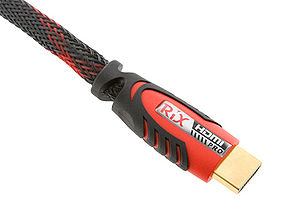Three recent experiences as a consumer have reminded the young marketer in me of why labeling matters. The hours of attention spent on the exact wording and careful design of product labels and hang tags, industry debates over federal and state regulations, and seemingly endless educational materials on the “consumer’s right to know” can seem a bit much in abstract.
Sunscreen SPF
Summer is here and recently I needed to stock up on some much-needed sunscreen. As I was wandering the drug store trying to locate where the products were, an employee approached me and the conversation we had went something like this:
Employee: “Do you know what you’re looking for and can I help you find it?”
Me: “Yeah, just trying to find some sunscreen.”
Employee: “It’s right over here. And by the way, anything over SPF 50 is just a made up number, so don’t fall for that.”
Me: “Yup, sure thing, thanks.”
At that moment it hit me: I had heard this notion before, I believed it because I heard it many times, and actually have repeated this statement without even looking up if it’s true or not. A quick Google search led me to WebMD and a pretty good article (click here for article) explaining that indeed the higher the SPF numbers, the slightly better it protects over time, but the percentages are so small that it doesn’t justify in a consumer’s mind spending many extra dollars on a 100 SPF over an SPF 45 lotion. Now when I’m scanning bottles, I’m aware that anything over 50 SPF is a consumer marketing tactic, and I ignore anything above it (half defiance towards the product / half trying to achieve bronze tone).
Natural or Organic
Shopping for food is a much greater challenge. Now that we’re at the mid point of 2012 it seems the over use of the words Natural or Organic has slowed down from being on every food product imaginable. I am hoping most of this is due to the uproar from real organic farms and their customers when it seemed every commercial was either “Tostitos now Organic” or “Natural ingredients used in Taco Bell.”
This article from Greener Ideal points out some of the flaws in Organic and Natural labeling, and offers some tips on how to properly find the food you desire: Research Outs “Natural” and “Organic” Labeling Lies. The biggest problem with this seems to be that the USDA and the FDA are relying on ambiguous language for labeling standards. As the article suggests, until this is resolved you cannot rely on labels alone and will need to do your research to make sure you know what you are getting.
HDMI Cables
Unlike many of my colleagues, I am less of a foodie nut than I am a fan of high-tech electronics. It’s easier to recognize the importance of labeling for products you put on or in your body than it is for something like cables. But it’s been well documented that HDMI cables are an easy way for consumers to fall for overpriced products. The best breakdown I’ve seen comes from CNET where they argue that nobody should pay more than $10 for a 6 foot HDMI cable. It strikes me as odd that even though this case has been made, a company like AudioQuest is selling an HDMI cable that is slightly longer than 6 feet, for nearly $1,500.00. That is not a typo, $1,500.00. While the product description uses words like “100% of the data delivered” or “Arrows are clearly marked on the connectors to ensure superior sound quality” (real quote from website), I believe it’s trying to bait consumers into thinking this is a must have for the enormous television or computer monitor they just bought.
The bottom line with labeling is — unfortunately, caveat emptor still holds true. As consumers, we all need to do our homework. And as marketers, there’s definitely room for improvement in the balance of effective promotional techniques with support for a “consumer’s right to know” in a wide range of industries.



